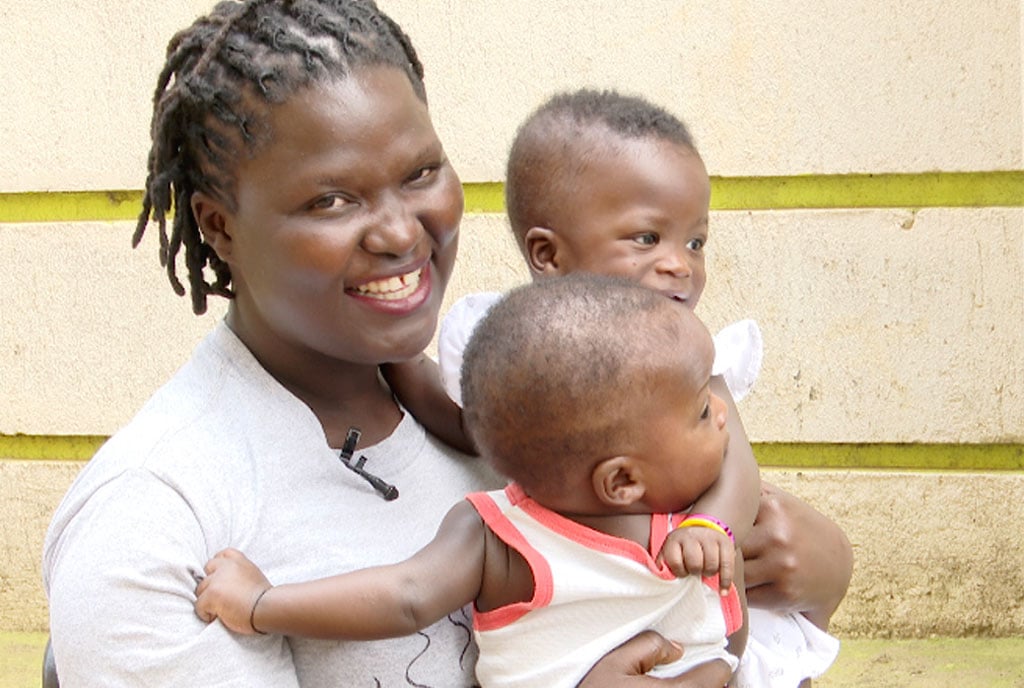
Participants, including children, ride stationary bikes during the National Activity Day in Kampala on June 16, 2024. Photo | Abet Tonny
A national survey report by Ugandan health researchers indicates that one in four adults have high blood pressure amid increases in the prevalence of high sugar levels and obesity in the population.
The survey, conducted between February and April 2023, used the World Health Organisation’s (WHO) STEPwise approach to surveillance, a standardised method of analysing risk factors for non-communicable diseases (NCDs).
Dr Josephine Birungi, a researcher on NCDs at the Medical Research Council (MRC), said Uganda, like other countries in the world, is experiencing increases in lifestyle diseases.
“We want to bring to your attention, the increasing burden of NCDs globally, but also here in Uganda. We used to refer to NCDs as diseases of the rich, but these are diseases now that are here with us,” she said.
“In Uganda, we have just concluded the NCD risk factor step survey 2023, and our hypertension (high blood pressure –HBP) prevalence is between 22 and 34 percent, implying that for every 10 people you see in Uganda, two to four have hypertension,” she added.
She made the remarks during the commemoration of the global week of action on NCDs held at Wakiso Health Centre IV on October 16.
The report published in the pre-print journal, medRxiv, however, indicates that the increase in hypertension was majorly in the northern and eastern parts of the country. But the central and western regions posted declining numbers.
Hypertension prevalence in northern Uganda was at 19.1 percent in 2014 but it increased to 19.6 percent last year. In eastern Uganda, its prevalence increased from 26.2 percent to 27.3 percent. However, in central region, the prevalence declined slightly from 27.7 percent to 27.3 percent and in western Uganda, it dropped from 23.3 percent to 21.6 percent. Nationally, there was a slight increase in prevalence from 24.3 percent to 24.5 percent between 2014 and 2023.
“Most of the common NCD risk factors increased between 2014 and 2023. There is an urgent need for the various stakeholders in Uganda to implement interventions targeting reduction in the prevalence of NCD risk factors to prevent the currently increasing burden of NCDs and associated mortality,” the report reads.
Dr Birungi noted that what is even more worrying in Uganda is that very few people are aware that they have the condition.
“Seven to 20 percent are aware that they have hypertension, and of those who are aware, only five to eight percent are controlled and the rest aren’t controlled. Diabetes prevalence is 1.4 to 4.5 percent. But this is caused by physical inactivity, obesity, and irregular check-ups, among others,” she said.
The new report also says the prevalence of high blood glucose doubled between 2014 and 2023, rising from 1.3 percent to 2.9 percent. The prevalence of overweight and obesity also increased from 19.4 percent to 23.9 percent in the same period (2014 and 2023).
According to health experts, NCDs can be prevented by limiting alcohol consumption, quitting smoking, maintaining a healthy weight, controlling stress, eating a healthy diet, reducing salt and sugar intake, being physically active and doing regular medical check-ups to detect the condition early and avert it.
The report shows that alcohol use increased from 28.3 percent to 31.8 percent between 2014 and 2023 amid the rising prevalence of sedentary lifestyles and unhealthy diets in mushrooming urban centres.
Dr Gerald Mutungi, the assistant commissioner-in-charge of NCDs at the Ministry of Health, said there is a need to detect high blood pressure early in order to control it before it develops into more serious conditions like stroke.
“As a ministry, we have ensured that non-communicable diseases such as hypertension are included in the list of priority services. We know their impact on building resilient health systems and in supporting post-pandemic recovery,” he said.
Dr Tonny Tumwesigye, the executive director of Uganda Protestant Medical Bureau, said they have integrated existing healthcare structures into primary care services to improve outreach to people and contribute to the prevention and halting of NCD spread in Uganda.
“The programme is currently present in the south-western region (Mbarara), eastern region (Jinja) and central region (Mityana) where we have used our extensive community-level presence to improve access to hypertension healthcare services to those who need it,” he said.
Dr Birungi, on the other hand, advised that it is important to address this by integrating HIV and NCDs to improve NCD care.
“We have done very well with HIV, and we can do better with NCDs. We want to bring care for these two conditions together; HIV/Aids, diabetes and hypertension. We need to work together as different stakeholders to provide drugs, counselling, and education in schools because non-communicable diseases don’t start at an advanced age,” she said.
Dr Charles Jjuuko, a clinician in the integrated clinic at Wakiso Health Centre IV, said statistics show that clients who have only HIV/Aids and receiving antiretroviral therapy (ART) were 3,805 patients as of June this year, diabetes patients were 8,00 while hypertensive patients were 1,950.
“The statistics of comorbidities (people having HIV along with hypertension or diabetes) that came through the integrated clinic in the July to September quarter were 10 patients co-infected with diabetes and HIV, those having hypertension and HIV in the same quarter were 131 patients and those with substance abuse were five patients and those with depression were only five,” he said.
Participants, including children, ride stationary bikes during the National Physical Activity Day in Kampala on June 16.
DOCTOR’S OPINION
Dr Charles Oyoo Akiya, the commissioner for non-communicable diseases (NCDs) at the ministry, said the number of people dying from non-communicable diseases is now at 41 percent, up from 33 percent in 2016.
“In the past, we used to have very low prevalence of diabetes, cancer, cardiovascular diseases --hypertension, stroke and heart failure, but the prevalence has increased,” he said.
“We need to invest more in the area of NCDs [to curb the deaths] because they kill people who are the productive age groups ---35 to 70 years, and yet these are the people we need to drive the economic development of the country,” Dr Oyoo added.








